

Nestled in the rugged landscape of Southwest England, Cornwall’s majestic coastlines and verdant countryside are punctuated by historical edifices that tell tales of yore. Among these, castles stand as sentinels of the past, their stone walls and towering battlements evoking images of medieval grandeur and intrigue. Cornwall, with its strategic position jutting into the Atlantic Ocean, has been a stage for many of history’s dramatic turns, and its castles have played crucial roles in these events.
These castles, each with a unique story, are not just remnants of a bygone era but are vital pieces of Cornwall’s cultural and historical tapestry. They have witnessed the ebb and flow of power, survived sieges, and seen the evolution of architectural styles through the centuries. From the early motte-and-bailey constructions to the sophisticated stone fortresses, these castles encapsulate the technological and strategic advancements of their times.
Today, these castles serve as a bridge between the past and the present, attracting history enthusiasts, architecture aficionados, and nature lovers alike. They are not only monuments to human endeavor and imagination but also guardians of history, each holding within its walls stories of bravery, love, betrayal, and innovation.
This blog aims to explore the enchanting world of Cornwall’s castles, delving into their historical backgrounds, architectural highlights, and the efforts to preserve them for future generations. We will journey through the tales of major castles in the region, uncovering the essence of their past and present. As we traverse from the strategic fortifications of Pendennis Castle to the mythical allure of St. Michael’s Mount, we invite readers to discover the rich heritage that these structures embody.
Beyond a mere historical account, this narrative will also provide practical insights for visitors, offering tips and recommendations to enhance the experience of exploring Cornwall’s castles. Whether you are a history buff, an architecture enthusiast, or simply in search of Cornwall’s breathtaking landscapes, the castles of this region promise a journey through time, where history comes alive amidst the natural beauty of the Cornish countryside.
Historical Background of Castles in the Region
The story of castles in Cornwall is a fascinating journey through time, starting from the early medieval period and extending through centuries of tumult, triumph, and transformation. Cornwall’s strategic position, with its rugged coastlines and natural harbors, made it a prized possession for successive waves of conquerors and defenders. This geographical significance is mirrored in the fortifications that dot its landscape, each castle a chapter in the region’s storied past.
Early Beginnings and Norman Influence
The origins of castle-building in Cornwall can be traced back to the aftermath of the Norman Conquest of England in 1066. The Normans, recognizing the strategic importance of Cornwall, established a series of motte-and-bailey castles across the region. These early castles were primarily wooden structures built atop earthen mounds, designed for rapid construction and defense against rebellion. However, it wasn’t long before these wooden fortifications began to be replaced with stone, reflecting the Normans’ intent to establish a lasting presence.
Medieval Fortifications and Strategic Strongholds
During the medieval period, Cornwall’s castles evolved from simple wooden structures to complex stone fortresses. This transition was driven by advancements in siege technology and the need for more durable and defensible structures. Castles such as Restormel and Tintagel were expanded and fortified, becoming symbols of feudal power and authority. These castles served multiple purposes: they were defensive strongholds, administrative centers, and symbols of lordship and control.
The strategic significance of Cornwall’s castles was particularly evident during periods of conflict, such as the Cornish Rebellion of 1497, when many castles served as rallying points and bastions against external threats. Their roles extended beyond military defense; they were integral to the social and economic fabric of medieval Cornwall, serving as courts, markets, and centers of governance.
Architectural Evolution and the Transition to Tudor Times
As architectural techniques advanced and the political landscape of England shifted, Cornwall’s castles underwent significant transformations. The Tudor period marked a shift away from the traditional defensive role of castles towards a greater emphasis on comfort and domesticity. This era saw the construction of new castles and the adaptation of existing ones to serve as lavish residences for the nobility. Castles such as St. Mawes and Pendennis were built not only as military fortifications but also as symbols of Tudor power and prestige, incorporating the latest in Renaissance architectural design.
Decline and Preservation
The importance of Cornwall’s castles as military fortifications waned with the advent of more modern forms of warfare and the centralization of royal power. Many castles fell into disuse and disrepair, becoming romantic ruins that inspired artists and writers during the Victorian era. However, the 20th and 21st centuries have seen a renewed interest in preserving these historical structures. Conservation efforts, led by organizations such as English Heritage and the National Trust, aim to protect these castles from the ravages of time and ensure they remain a vital part of Cornwall’s heritage.
Legacy and Historical Figures
Throughout their history, Cornwall’s castles have been associated with a myriad of historical figures, from Norman lords to Tudor kings. These individuals left their mark on the region’s castles, whether through expansion, fortification, or simple residence. Their legacies, intertwined with the stone and mortar of these structures, continue to fascinate historians and visitors alike.
Major Castles in the Region
Cornwall’s landscape is dotted with castles, each telling a unique story of medieval grandeur, strategic importance, and architectural innovation. In this section, we delve into the histories, architectural highlights, and visitor information of ten of Cornwall’s most significant castles.
Pendennis Castle
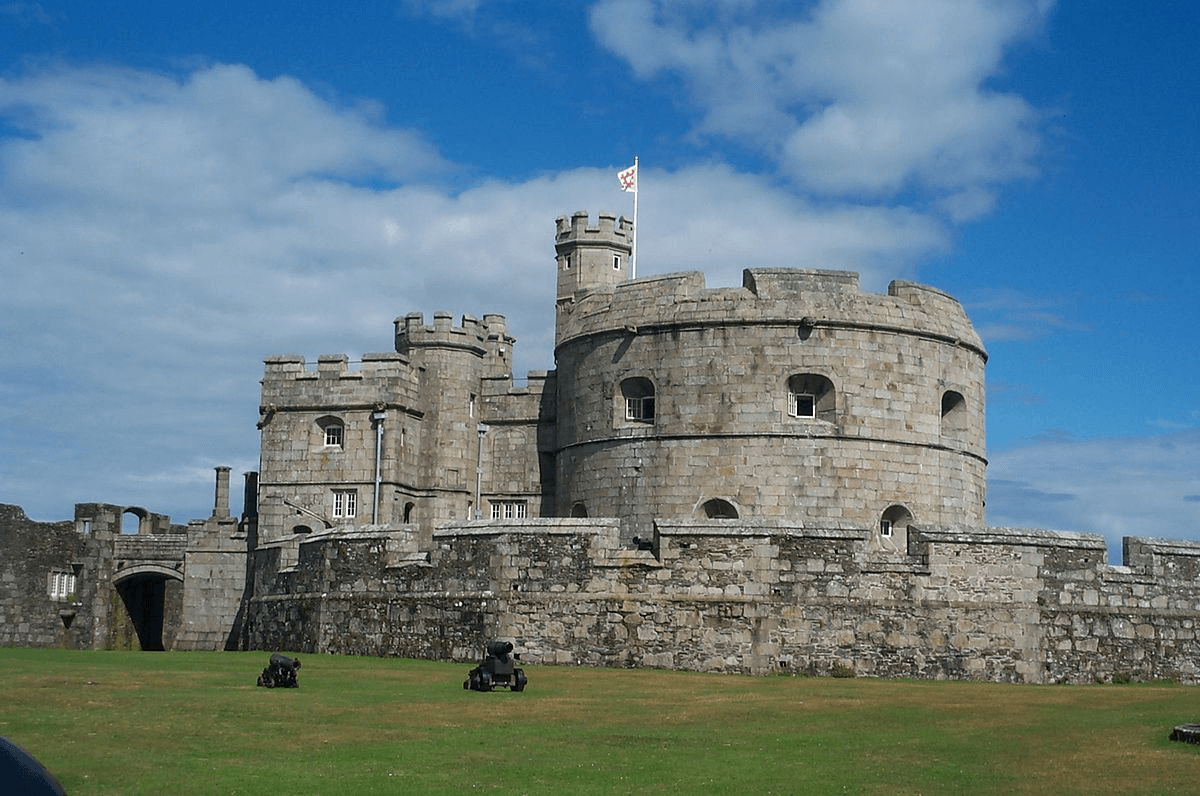
History: Pendennis Castle’s foundation was laid under the orders of Henry VIII as a response to the perceived threat of invasion from Catholic France and Spain. Its strategic position overlooking the Fal Estuary made it a key point of defense for centuries. The castle played a pivotal role during the English Civil War, where it was one of the last royalist strongholds to surrender. Over the years, it was adapted to face the challenges of modern warfare, right up until World War II, reflecting the continuous evolution of military technology.
Architectural Highlights: The castle’s design showcases the transition from medieval fortress to modern bastion. The original Henrician fortification, characterized by its circular layout and central keep, was augmented in the 17th and 19th centuries with advanced fortifications, including the Half Moon Battery. The blend of Tudor military architecture with later Victorian modifications provides a fascinating overview of the developments in defensive strategies.
Visitor Information: Pendennis Castle offers a wealth of experiences for visitors. The castle hosts reenactments, cannon firings, and interactive exhibits that bring its history to life. The site also offers breathtaking views of the Cornish coastline, making it a perfect spot for photography enthusiasts and nature lovers.
St Michael's Mount
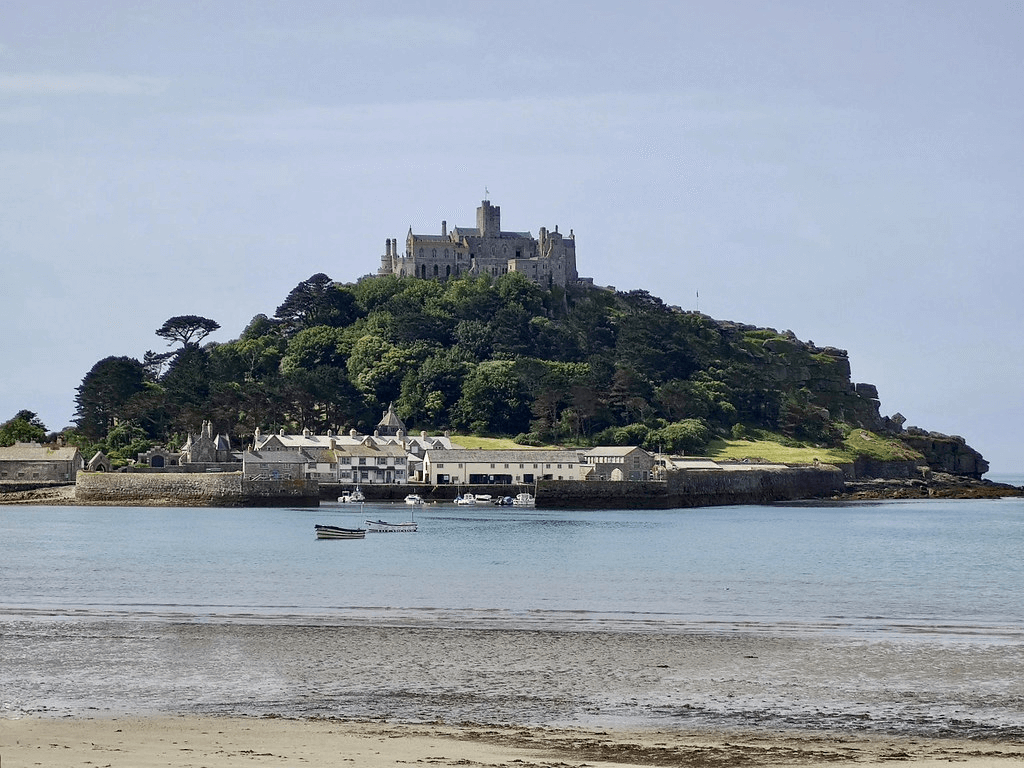
History: St. Michael’s Mount is steeped in legend and history, with its origins linked to the archangel Michael. It is said that the archangel appeared to local fishermen in the 5th century, marking the mount as a spiritual site. The castle has been a monastery, a fortress, a private home, and a pilgrimage site over the centuries. Its strategic importance was also recognized during the Wars of the Roses and the English Civil War, where it changed hands multiple times.
Architectural Highlights: The castle’s architecture is a mix of medieval, monastic, and fortified elements. Its unique position atop a granite crag, accessible by a causeway at low tide, adds to its mystical allure. Inside, the castle contains a church, living quarters, and gardens that have been adapted over the centuries to meet the needs of its inhabitants.
Visitor Information: Access to St. Michael’s Mount is an adventure, with visitors able to walk across the causeway at low tide or take a boat at high tide. The castle offers guided tours that reveal its history and legends, while the terraced gardens provide a peaceful retreat with stunning views of Mount’s Bay.
Restormel Castle
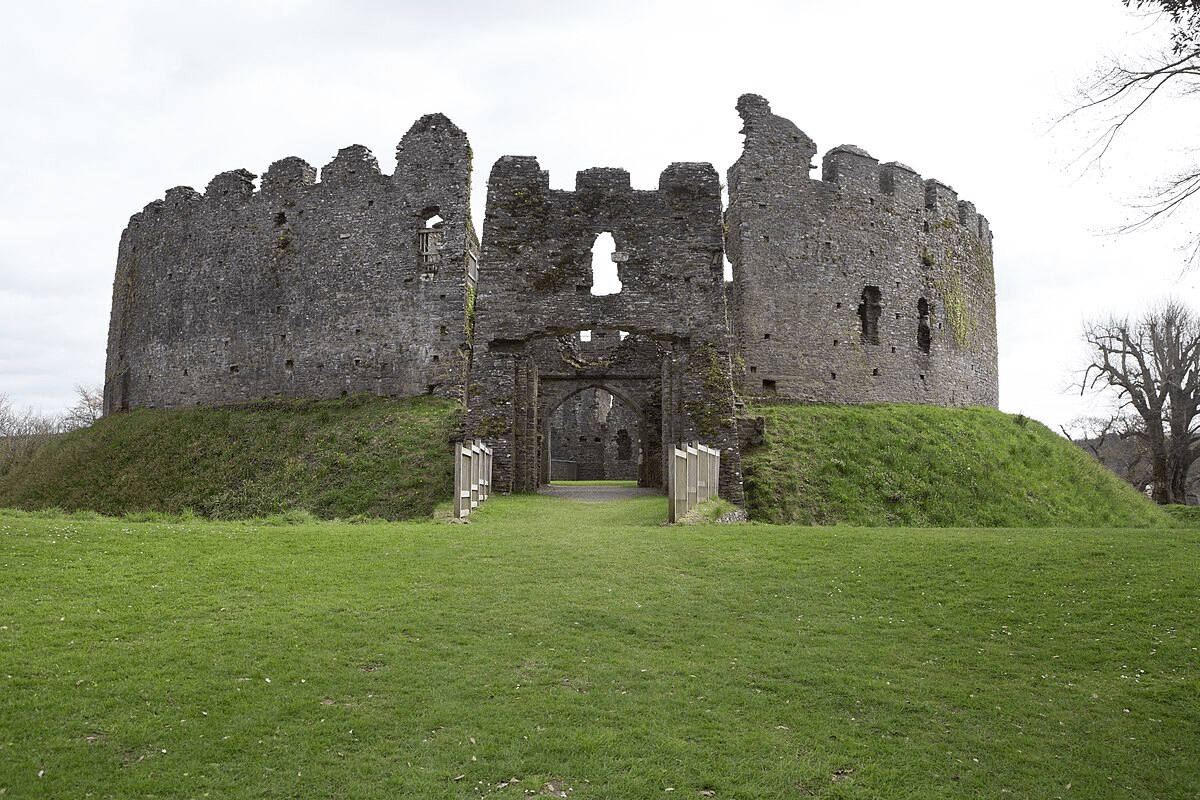
History: Restormel Castle, with origins dating back to the Norman conquest, served as a luxurious residence for the Earls of Cornwall in the 12th and 13th centuries. Its most famous resident, the Black Prince, used it as a base for hunting and entertainment. The castle saw action during the Civil War but was eventually abandoned, becoming the romantic ruin it is today.
Architectural Highlights: The castle’s most distinctive feature is its perfectly circular design, rare among English castles. The ruins of the inner castle walls reveal the grandeur of the past, with traces of the great hall, kitchens, and private chambers offering a glimpse into medieval life.
Visitor Information: Today, Restormel Castle is a serene ruin, inviting visitors to explore its circular keep and enjoy picnics within its grounds. The site offers panoramic views of the surrounding River Fowey valley, making it a favorite for walkers and history buffs.
Lanhydrock House
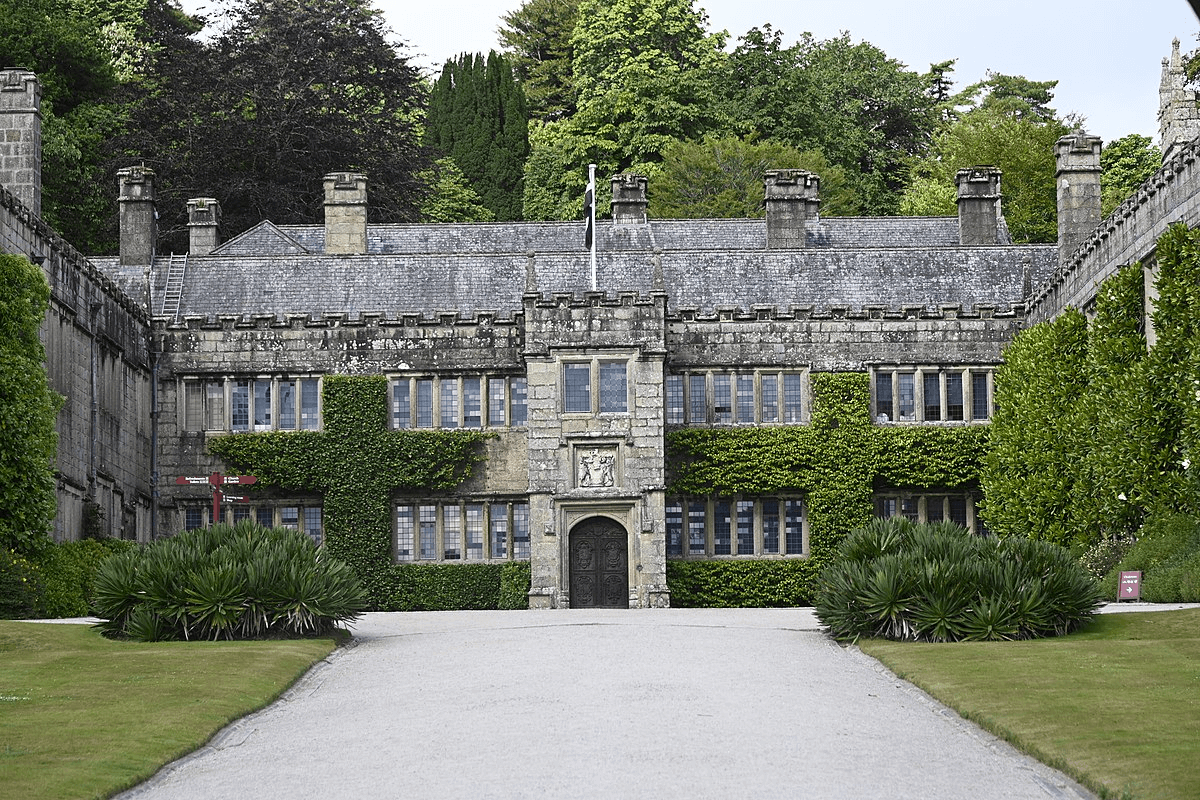
History: Lanhydrock House, more a stately home than a castle, was largely rebuilt in the 19th century after a devastating fire. It has been the ancestral home of the Agar-Robartes family for centuries, with each generation leaving its mark. The house reflects the social changes and technological advancements of the Victorian era, offering insights into the lives of both its noble residents and their servants.
Architectural Highlights: Lanhydrock’s architecture is a splendid example of Victorian Gothic revival, with intricate stonework, towering chimneys, and a majestic gatehouse. The house’s interior is equally impressive, featuring lavish reception rooms, a grand kitchen, and servants’ quarters, all meticulously restored to their Victorian splendor.
Visitor Information: Lanhydrock offers a comprehensive look at Victorian life, with the house and gardens open to the public. Visitors can explore the extensive estate on foot or by bike, enjoying the formal gardens, ancient woodlands, and riverside paths.
Photo Author Matthew Prior
St Mawes Castle
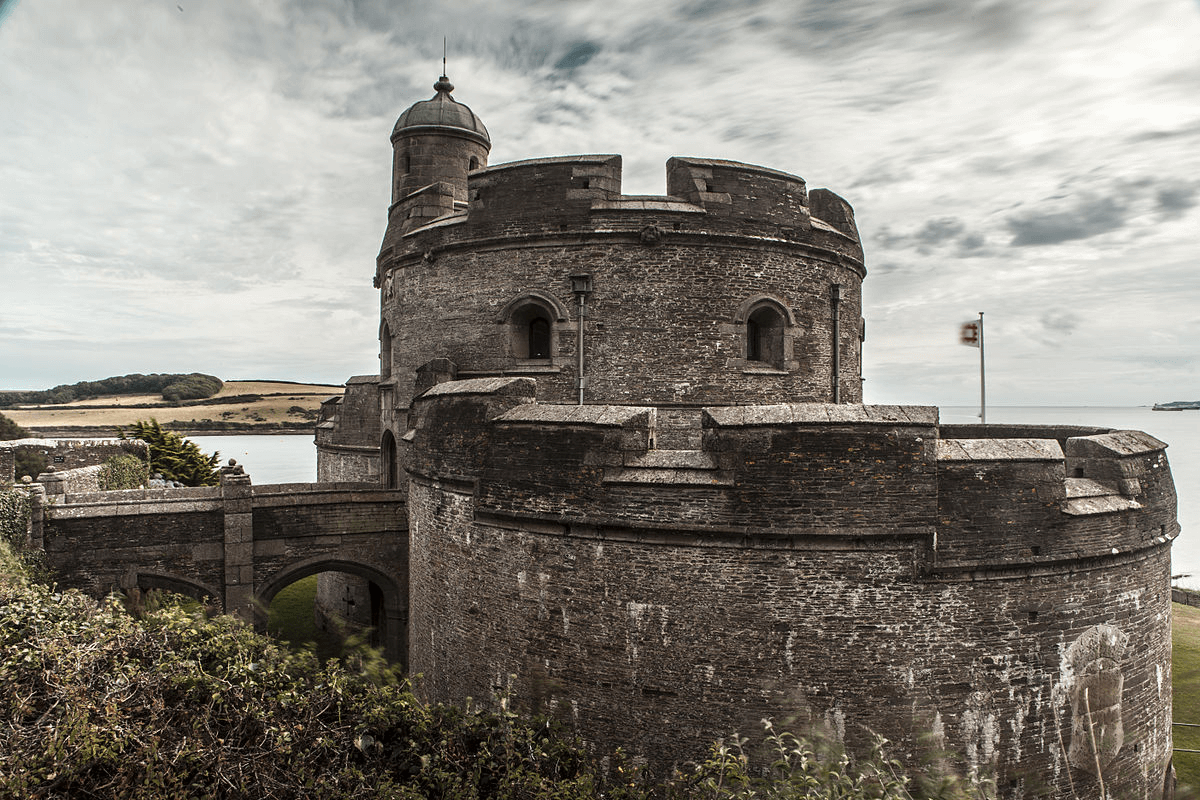
History: Built by Henry VIII alongside Pendennis, St Mawes was part of a chain of coastal fortifications. Unlike Pendennis, St Mawes saw little action, its design proving less effective against the more advanced artillery of the time. It served various roles, including a prison during the Civil War, but was eventually deemed obsolete as a defensive structure.
Architectural Highlights: St Mawes Castle is celebrated for its unique clover-leaf shape, designed to mount guns covering every approach. Its decorative elements, such as the elaborate Tudor Rose above the entrance and Latin inscriptions praising Henry VIII and Anne Boleyn, reflect the period’s artistic sensibilities alongside its military purpose.
Visitor Information: Visitors to St Mawes Castle can enjoy guided tours that highlight its architectural and historical significance. The castle’s grounds offer stunning views of the Fal Estuary, making it a picturesque spot for leisurely walks and picnics.
Photo Author Claudiu Bichescu
Carn Brea Castle
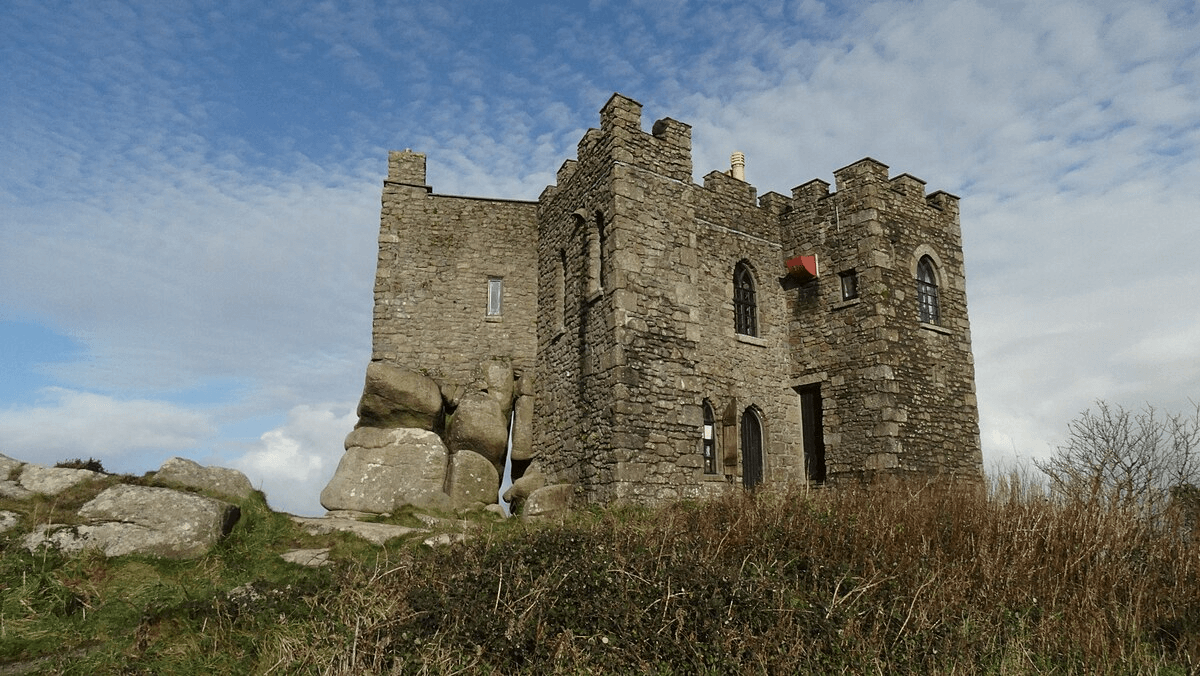
History: Carn Brea Castle’s history is deeply intertwined with the landscape it occupies, a site of human activity since Neolithic times. The structure that now stands, originally a 14th-century chapel, was transformed into a hunting lodge by the Basset family, prominent local landowners, in the 18th century. Its history reflects the broader story of Cornwall itself, from prehistoric settlement through medieval spirituality to post-medieval aristocratic leisure.
Architectural Highlights: Though small, Carn Brea Castle’s architecture is fascinating, featuring elements typical of a fortified structure despite its primary use as a hunting lodge. Its location on Carn Brea, one of Cornwall’s most significant historic landscapes, offers sweeping views that encompass both the industrial heritage of the region and its natural beauty.
Visitor Information: Currently serving as a private restaurant, the castle provides a unique dining experience. While direct visitor access to the interior is limited to patrons, the surrounding area remains a popular destination for hikers and history enthusiasts, offering panoramic vistas of Cornwall.
Photo Author Colin Park
Trematon Castle
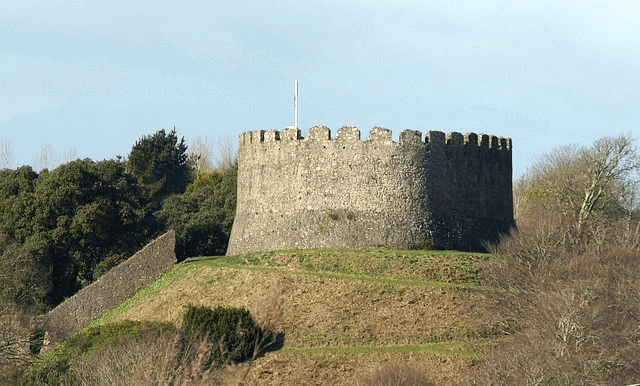
History: Trematon Castle, commanding views over the River Lynher, was established shortly after the Norman Conquest, serving as a symbol of Norman authority. Throughout its history, it has been a military stronghold, a royal residence, and a private home, mirroring the ebb and flow of English history in the southwest. Its strategic importance, while diminished over time, has left a legacy of stories and architecture that captures the imagination.
Architectural Highlights: The castle’s motte-and-bailey design is among the best-preserved in the region, with its imposing keep and surrounding walls offering a snapshot of medieval military architecture. The preservation of these features allows visitors to step back in time and understand the strategic considerations of Norman fortification.
Visitor Information: Although Trematon Castle is primarily a private residence and not regularly open to the public, occasional open days and events allow visitors to explore its grounds and history. These rare opportunities are eagerly anticipated by history buffs and offer a unique chance to experience one of Cornwall’s hidden gems.
Photo Attribution: Derek Harper / Keep, Trematon Castle / CC BY-SA 2.0
St Catherine's Castle
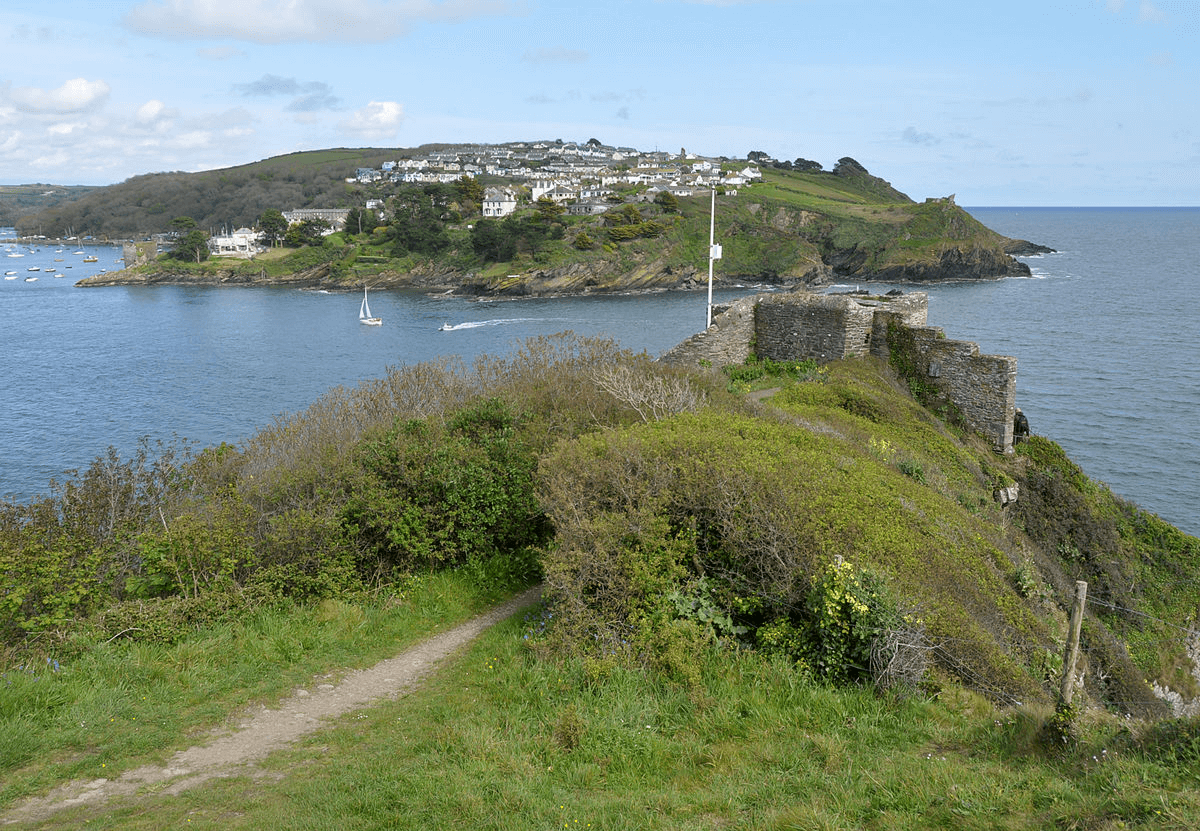
History: Built in the 1530s as part of Henry VIII’s coastal defense strategy, St Catherine’s Castle was designed to protect Fowey Harbour from naval threats. Its military role continued sporadically, with the castle being re-armed during the 19th century and again in World War II, reflecting the ongoing strategic importance of Cornwall’s coastline.
Architectural Highlights: This small artillery fort combines the early modern military architecture of Henry VIII’s reign with later Victorian modifications, all set against the backdrop of the Cornish coast. The castle’s location, perched on the cliffs above the entrance to Fowey Harbour, makes it both a picturesque and strategic point of defense.
Visitor Information: Managed by English Heritage and freely accessible to the public, St Catherine’s Castle offers a tranquil spot for exploration and reflection. The walk to the castle, through woodland and along the coast, is as rewarding as the visit itself, offering stunning views and a peaceful retreat.
Photo Author Nilfanion
The Castle Bude
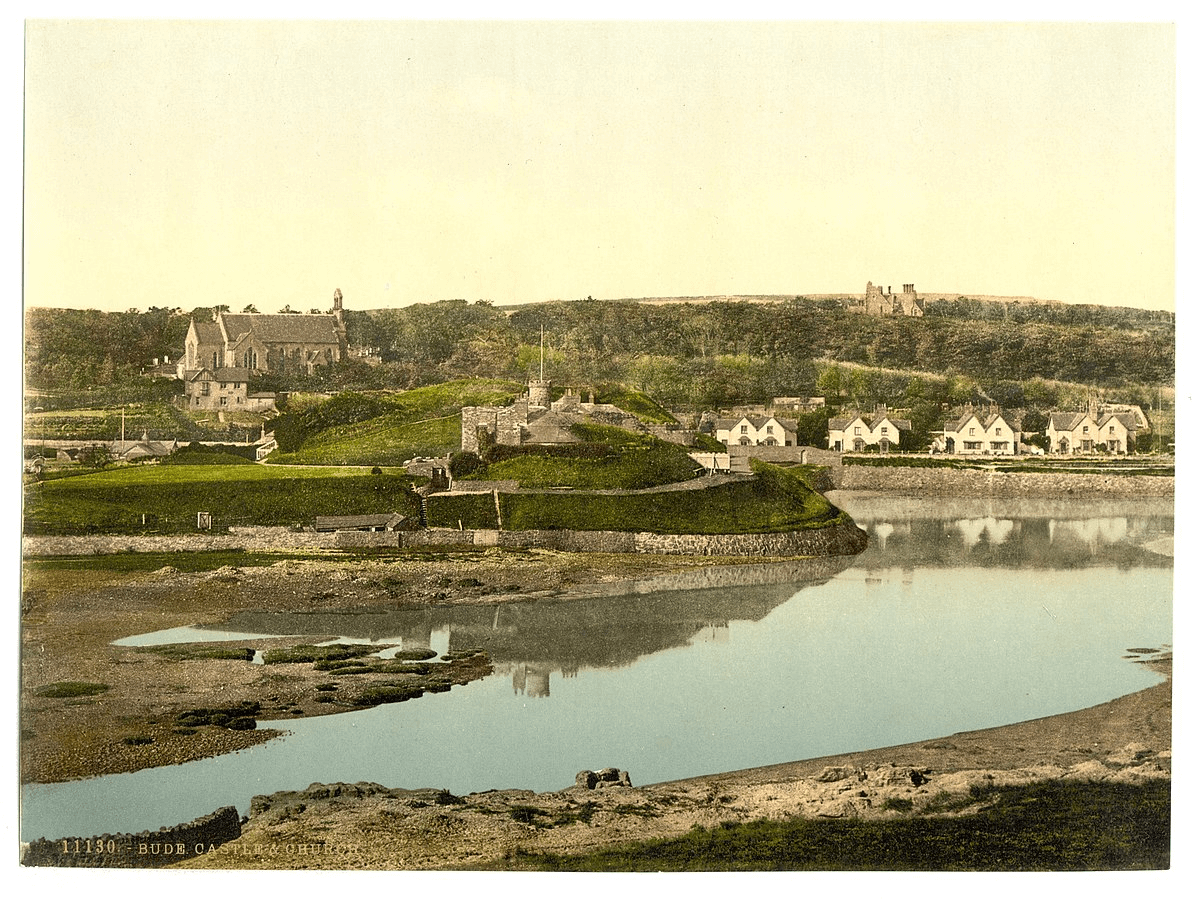
History: Bude Castle, built by Sir Goldsworthy Gurney in the 19th century, stands as a monument to Victorian innovation and ingenuity. Gurney, an inventor and engineer, constructed the castle on sand using a concrete raft foundation, a pioneering technique at the time. Beyond its architectural interest, the castle reflects the Victorian era’s spirit of innovation and the personal achievements of Gurney himself.
Architectural Highlights: The castle’s design is notable for its adaptation to the challenging coastal environment of Bude, incorporating Gothic elements into a structure built for both residence and experimentation. Its construction technique was ahead of its time, demonstrating early understanding of the need for stable foundations on unstable ground.
Visitor Information: Today, Bude Castle serves the community as a heritage center, offering insights into local history, Gurney’s life, and the broader Victorian era. The center hosts exhibitions, workshops, and events that make it a cultural hub in Bude, connecting visitors with the past and the present.
Pengersick Castle
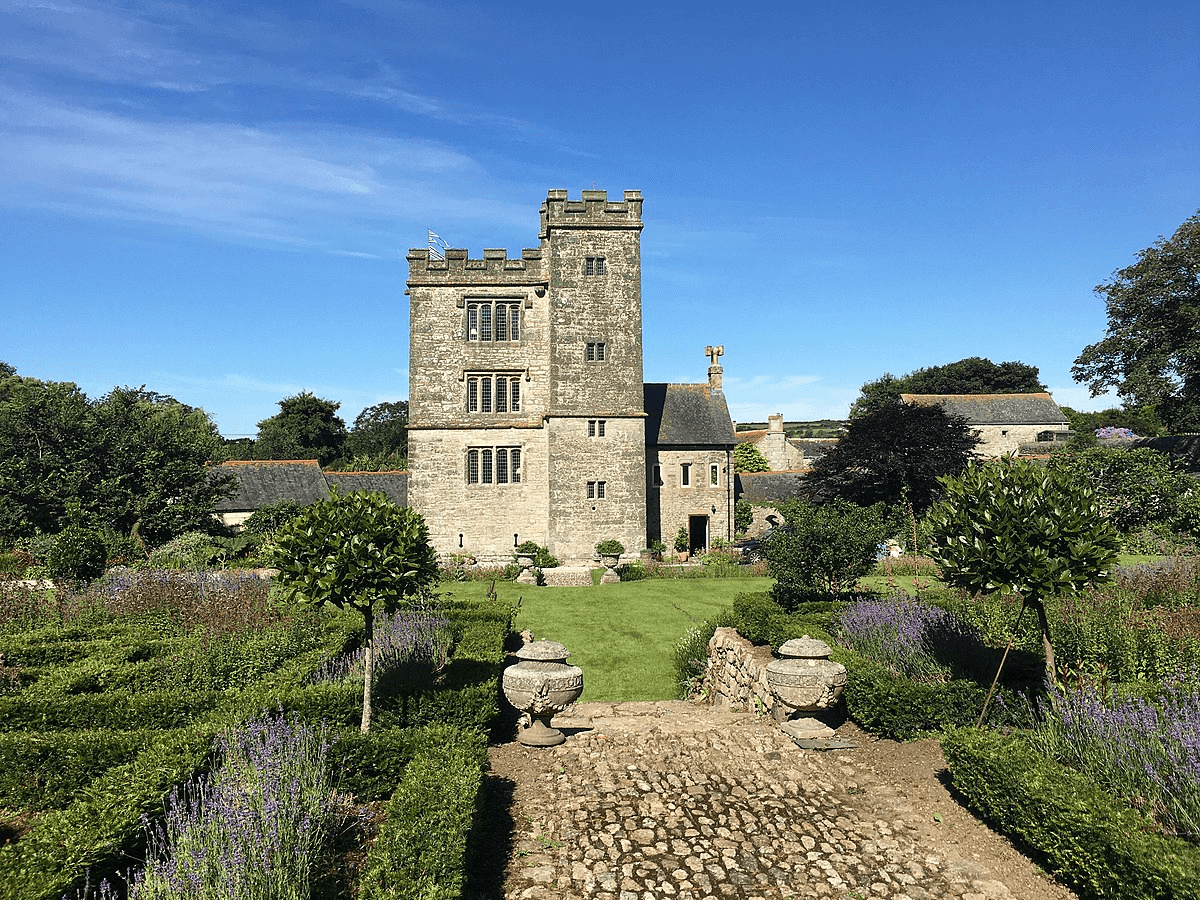
History: Pengersick Castle’s origins are enveloped in mystery, with parts of the structure dating back to the medieval period. Its history is rich with tales of piracy, supernatural occurrences, and family feuds, making it one of Cornwall’s most intriguing historical sites. The castle’s most notable period came during the Tudor era when it served as a fortified manor house.
Architectural Highlights: The surviving tower of Pengersick is a testament to the defensive architecture of the Tudor period, with features designed for both protection and prestige. Its gardens and the surrounding landscape add to the castle’s enchanting atmosphere, blending history with the natural beauty of Cornwall.
Visitor Information: Pengersick Castle offers guided tours that delve into its rich history and reputed hauntings, providing a unique experience for visitors interested in the paranormal as well as the historical. These tours, often led at night, offer a different perspective on Cornwall’s heritage, appealing to those drawn to the mysteries of the past.
Photo Author Alice Penger
Conservation and Tourism
The castles of Cornwall are not only monuments to the past but also vital assets for the region’s future. Their conservation and the role of tourism in sustaining these historic sites are intertwined, presenting both opportunities and challenges. This section explores the efforts being made to preserve these castles and their importance as tourist attractions.
Conservation Efforts
The preservation of Cornwall’s castles is a testament to the dedication of various organizations, including English Heritage, the National Trust, and local trusts, alongside private owners. These entities undertake a range of activities to ensure the castles’ survival, from routine maintenance and structural repairs to more significant restoration projects. Conservation work often requires a delicate balance between preserving the historical integrity of the sites and making them accessible and safe for visitors.
One of the key challenges in conservation is addressing the wear and tear caused by the elements and the passage of time. Cornwall’s coastal castles, in particular, face threats from erosion and salt damage. Innovative techniques and materials are used to combat these issues, often drawing on historical building methods to ensure authenticity.
The Role of Tourism
Tourism plays a crucial role in the conservation of Cornwall’s castles. Visitor fees and donations provide essential funding for maintenance and restoration projects. Moreover, tourism helps to raise awareness about the historical and cultural significance of these sites, fostering a sense of stewardship among both locals and visitors.
To enhance the visitor experience, many castles host interactive exhibits, guided tours, and educational programs. These initiatives not only make visits more engaging but also help to convey the importance of preservation efforts. Events such as medieval fairs, historical reenactments, and cultural festivals add another layer of attraction, drawing diverse audiences and providing additional revenue streams.
Balancing Preservation and Accessibility
One of the ongoing challenges in managing historic castles is balancing the need for preservation with the desire to make these sites accessible to the public. Efforts to improve accessibility, such as installing modern facilities or creating virtual tours, must be carefully planned to avoid compromising the castles’ historical integrity. Regulations and guidelines ensure that any modifications or additions are sympathetic to the original structures.
Environmental sustainability is also a growing concern in the management of tourist sites. Many castle custodians are implementing measures to reduce the environmental impact of tourism, from minimizing waste to encouraging the use of public transport.
Success Stories and Future Directions
There are numerous success stories of conservation in Cornwall, where historic sites have been sensitively restored and repurposed for public enjoyment. These successes highlight the potential for historic castles to serve as vibrant community assets, educational resources, and economic drivers.
Looking to the future, the focus on digital engagement and virtual reality offers new ways to experience Cornwall’s castles, reaching audiences who might not be able to visit in person. These technologies can complement physical visits, providing deeper insights into the castles’ histories and the people who lived in them.
Visiting the Castles: Tips and Recommendations
Exploring the castles of Cornwall is an adventure into the past, offering a glimpse into centuries of history, architecture, and the natural beauty of the region. To make the most of your castle visits, here are some practical tips and recommendations.
Best Times to Visit
- Seasonal Considerations: The best time to visit Cornwall’s castles is during the spring (April to June) and early autumn (September to October). These periods offer mild weather, fewer crowds, and the natural landscape at its most vibrant. Summer months (July and August) are peak tourist season, so expect larger crowds and longer waiting times at popular sites.
- Special Events: Keep an eye out for special events such as medieval fairs, historical reenactments, and guided tours. These events can enhance your visit by providing additional context and entertainment, but they may also affect crowd levels.
Ticketing Options and Heritage Memberships
- Advance Tickets: Where possible, purchase tickets in advance, especially for the most popular castles. This can save time and sometimes money, as discounts are often available for early bookings.
- Heritage Memberships: Consider investing in memberships with organizations like English Heritage or the National Trust if you plan to visit multiple sites. These memberships offer great value, providing free entry to a wide range of attractions for a single annual fee.
Enhancing Your Visit
- Guided Tours: Many castles offer guided tours, which can provide deeper insights into the history and architecture of the sites. These tours are often led by knowledgeable guides who can share fascinating stories and details not found in guidebooks.
- Family-Friendly Activities: Look for castles that offer activities for children, such as treasure hunts, interactive exhibits, and hands-on historical workshops. These can make the visit more engaging for younger visitors.
- Accessibility: Check in advance for accessibility information. Many castles have made efforts to improve access, but due to their historical nature, some areas may not be fully accessible to visitors with mobility issues.
Practical Advice
- Wear Comfortable Shoes: Many castles are situated on expansive grounds with uneven terrain. Comfortable walking shoes are a must for exploring these sites thoroughly.
- Check Weather Conditions: The weather in Cornwall can be unpredictable. Bring layers and waterproof clothing to ensure you’re prepared for any changes.
- Photography: Castles make for stunning photographs, but be mindful of any restrictions, especially when using drones. Always seek permission where required.
Making the Most of Your Visit
- Plan Your Route: Cornwall’s castles are spread out across the region. Planning your route can help you maximize your time and enjoy more of what each site has to offer.
- Stay Local: Consider staying in local accommodations to fully immerse yourself in the area’s history and culture. Many castles are located near charming villages and towns that offer their own attractions.
Conclusion
Cornwall’s castles are gateways to the past, standing as monuments to the region’s rich history and cultural heritage. They offer something for everyone, from history enthusiasts and architecture aficionados to families looking for an educational and fun day out. By following these tips and recommendations, visitors can ensure a memorable and enriching experience exploring these historical treasures.
As we close this journey through the castles of Cornwall, it’s clear that these ancient structures continue to captivate and inspire. They remind us of the enduring power of history to shape our present and future, inviting us to explore, learn, and preserve for generations to come.

